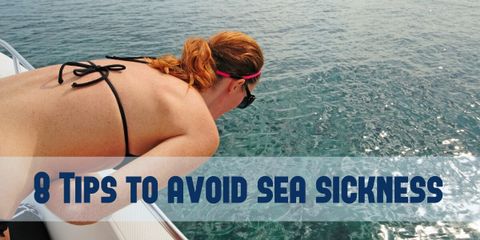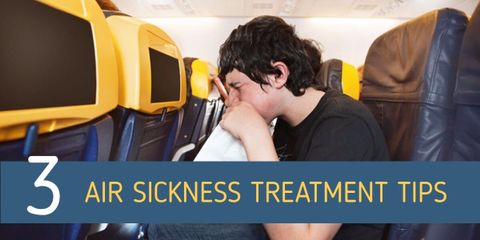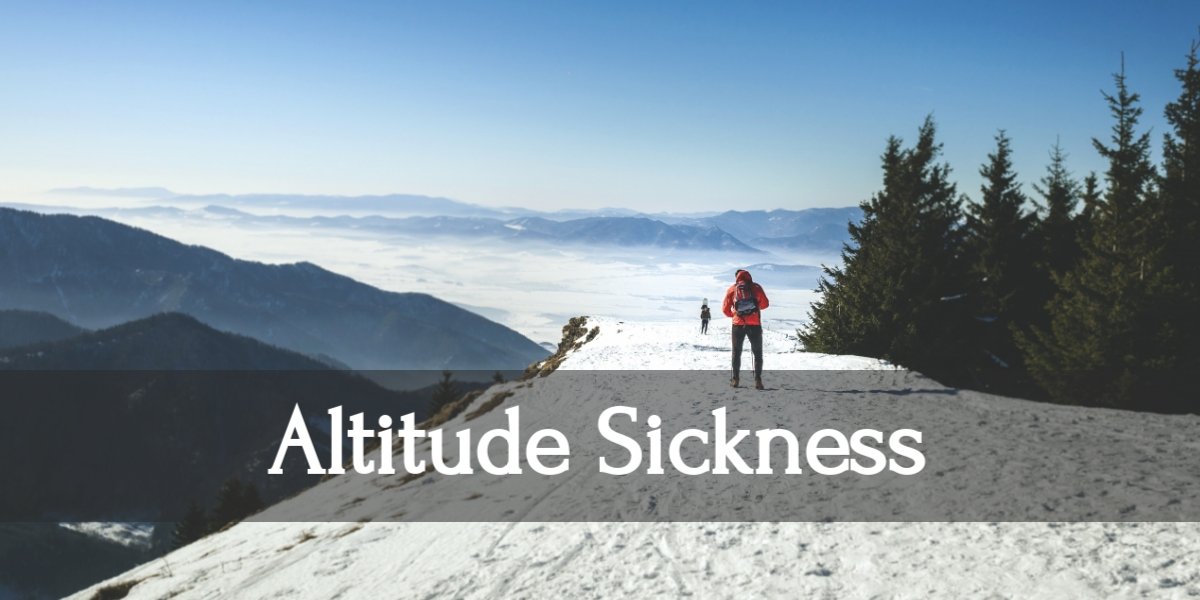
Everything You Need to Know About Altitude Sickness
While there are obstacles such as avalanches and weather conditions that can prohibit you from completing your once-in-a-lifetime trek, these obstacles are generally out of your control. The number one reason you might not finish your trek to e.g. Everest Base Camp, Kilimanjaro, or another trek or climb around the world, however, is likely because of altitude sickness. But in most cases, altitude sickness can be controlled or avoided with a variety of treatment and preventive measures.
What is Altitude Sickness?
Altitude sickness, also known as Acute Mountain Sickness (AMS), is caused by the rapid ascent in altitude which leaves our bodies with less oxygen. When the body reaches high altitudes in a rapid ascent, the body may not have enough time to adjust to the decreased air pressure. This causes several symptoms in trekkers ranging from headaches to nausea, hyperventilation and in some rare cases irregular heartbeat, all caused by shortage of oxygen.
What causes AMS?
AMS is caused by the decrease of oxygen available to breathe due to changes in the driving pressure in the atmosphere as a person gains altitude. While there is roughly 21% oxygen in the atmosphere at all times, the difference in the driving pressure of oxygen at sea level and at higher altitudes are very different. AMS is generally not a problem for people until one reaches +2500 meters above sea level.
Driving pressures are considerably less with each gain of 100 meters in altitude once you go beyond 2500 meters. For instance, at 3600 meters the driving pressure towards oxygen is reduced by 40% which creates 40% less oxygen for your body to consume, especially at a time when your body is exerting more energy as you trek higher.
The Three Stages of AMS
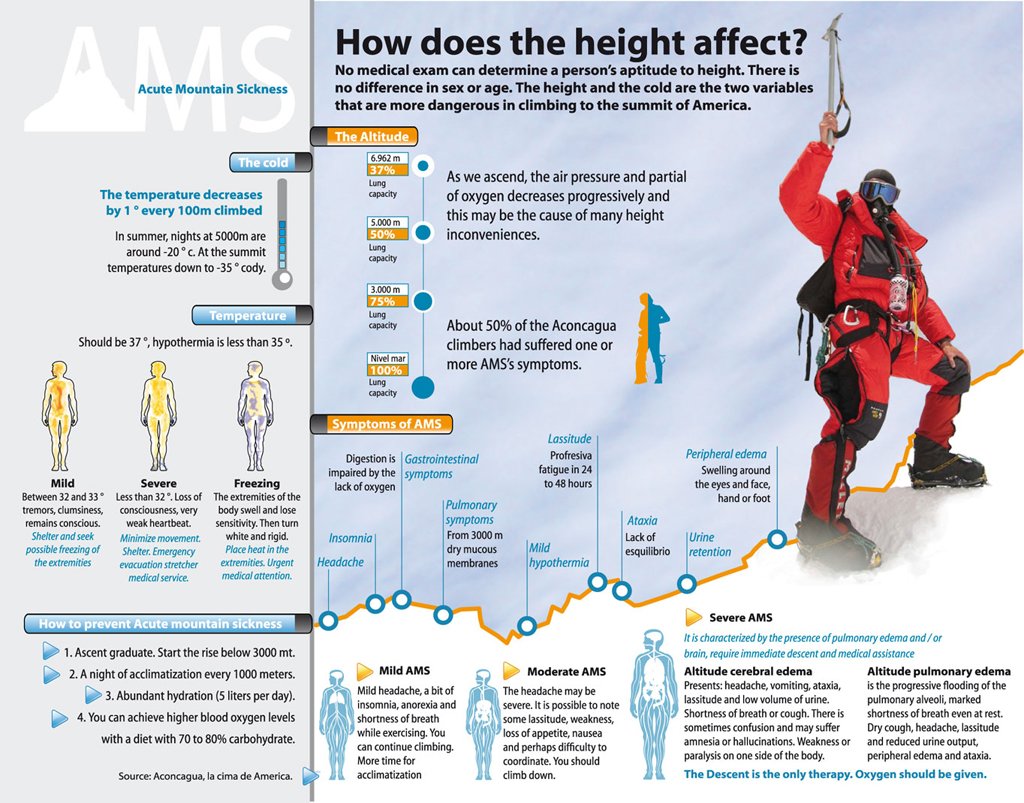
Normal – AMS
At this stage, AMS exhibits the following symptoms which are similar to a person suffering an alcohol hangover:
- Headache
- Nausea/vomiting
- Fatigue
- Loss of appetite
- Difficulty sleeping
The best remedy for AMS is to descend to a lower altitude until your body can acclimatize. Another form of treatment can include taking Diamox pills on a daily basis.
Mild – High Altitude Cerebral Edema (HACE)
HACE occurs from a severe untreated case of AMS. HACE is the direct effect of higher skull pressure which is caused by fluids entering your brain tissue which initiates swelling of your brain. Although the brain is less than 2% of your total body weight it requires 15% of all oxygen to function. This type of sickness is often coupled with pulmonary edema, a condition caused by excess fluid in the lungs, and can be life threatening if not immediately treated. In addition to the symptoms of AMS, a person suffering from HACE also exhibits the following:
- Stumbling while walking, also known as ataxia
- Mental confusion or sluggishness
- Drowsiness
Treatment for HACE requires an immediate descent to lower altitudes while being accompanied by partners. Victims may also take Diamox to help slow down AMS and HACE until medical attention is found. Serious cases of HACE require helicopter rescues to the nearest hospitals or health facilities.
Severe – High Altitude Pulmonary Edema (HAPE)
HAPE is a third form of sickness that can occur at high altitudes. HAPE is the result of below normal oxygen levels which in turn affects the pulmonary artery, where fluid gets accumulated in the lungs. The pulmonary artery becomes smaller in diameter allowing for less oxygen which in turn leads to blood entering the alveoli and then the lungs. HAPE can happen without a person suffering first from AMS or HACE. However, trekkers can prevent HAPE by taking Diamox or nifedipine at least one day before an ascent and continuing to take the medication for five days after arriving at higher altitudes. Symptoms of HAPE include:
- Wet or dry cough
- Chest pains
- Breathing is difficult even during periods of mild expulsion of energy or relaxation
- Phlegm is generally filled with blood residue and is frothy
- Marked fatigue and weakness
- Confusion and/or irrational behaviour
- Irregular heartbeat
Treatment for HAPE is best done with descending to a lower altitude at the earliest time of discovery. Medicines that have been found to be effective treatments for HAPE include nifedipine which minimizes the pressure of your pulmonary arteries. Immediate evacuation by helicopter is generally necessary for trekkers/climbers suffering from HAPE.
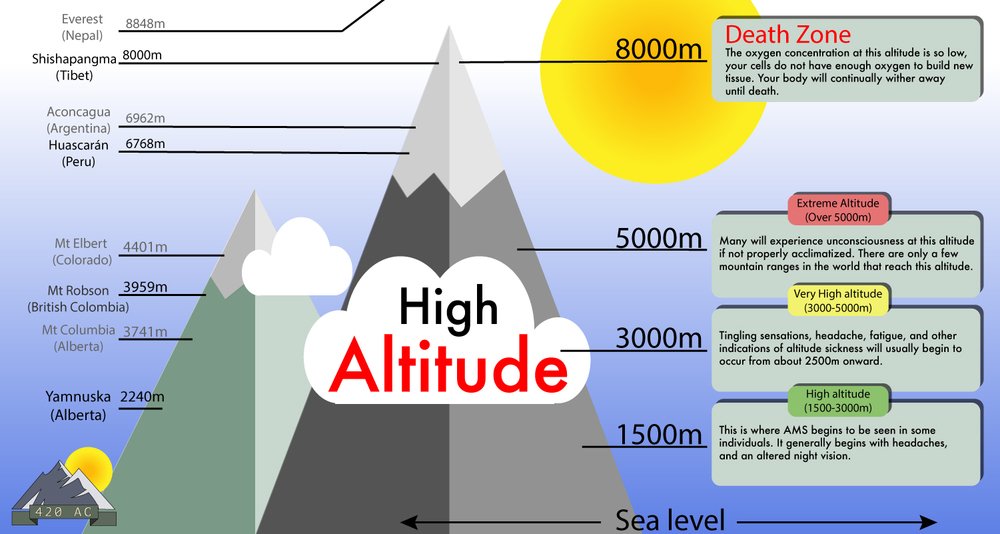
How Can You Prevent AMS, HACE or HAPE?
Overall preventative measures before and during your trek are the best way to help alleviate problems of contracting AMS, HACE or HAPE. Measures that can be taken to help minimize the risk of AMS, HACE or HAPE include the following:
- The best way to prevent AMS is by acclimatizing. Before heading for a trek at altitudes higher than 3000 meters, spend at least one night in an elevation below 3000 meters. Acclimatizing your body at high altitude is a gradual process. Never ascend too rapidly. Experts recommend not ascending more than 300-400 meters per day when you are at an elevation above 3000 meters.
- Don’t exert yourself too much when ascending. Walking in a moderate pace will help you acclimatize better as you body can allocate additional resources to acclimatizing to the lower pressure and oxygen levels.
- A standard moto to follow is “go high and sleep low”. This can be accomplished by planning a trek carefully. For instance, a 10km route may include an elevation gain of more than 300 meters in a day as well as a descent of 100 meters before establishing a camp for the evening. Establishing camp at a lower altitude allows your body to adjust to the driving pressures associated with the lack of available oxygen for your body. When ascending and establishing a camp at more than 300-400 meters in one day, a rest day is recommended.
- Stay hydrated at all times and get enough food and sleep too. Doctors recommend drinking an additional 1 litre of water per day for every 1000 meters of altitude scaled. Staying hydrated can be challenging based on available water sources. Make sure you have the appropriate equipment to purify water such as a carbon filter system, iodine tablets or a stove to boil water/snow before drinking. Use your time wisely during rest stops on the trail and in base camps by purifying a sufficient amount of water to help you stay hydrated. Electrolytes can be added to purified water to help your body recover during and after times of exertion.
- Stay away from alcoholic beverages and smoking.
- Taking Diamox (acetazolamide) pills can help your body acclimatize more quickly. You can easily start one day before reaching altitude of +3000 meters, or start when you feel the first symptoms of AMS.
When in higher altitudes, don’t be afraid if you get a small headache resulting from potentially AMS, but do make sure to follow the above recommendations, and if the headache coupled with another symptom starts to be severe and increase, please do descend and potentially seek medical help.
Your body is a wonderful piece of machinery that you have honed over the years, enabling you to accomplish your wildest dreams of adventure. Take precautions from the onset and consult a doctor before you set-off on that life changing journey that includes crossing into higher altitudes. Please see the following link for more information about AMS. If you’re looking for treks in Nepal, perhaps check out Bookmundi, the largest trek and tour aggregator in Nepal.
Wishing you an amazing altitude experience!
References
- www.globaltraveler.com/altitude-sickness/
- https://snowbrains.com
Written By Kate Mark

Kate is a mid-lifer who quit a growing corporate career to reawaken her passions and her lifelong dream of traveling the world.

